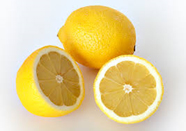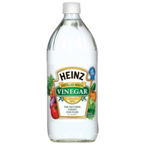
What do lemons and vinegar have in common? If you said they both taste sour, you’re right! For several hundreds of years, these and other substances were classified as acids because they shared several characteristics, like tasting sour.

Other substances, such as lye used to make soap, were found to taste bitter and feel slippery.
As early as the 1600s, people were experimenting with common substances to determine if it could either be classified as an acid or a base. One indicator that the people used back then, and still do today, is litmus paper.
![]() Discover how litmus paper is used to classify substances as acidic, basic, or neutral.
Discover how litmus paper is used to classify substances as acidic, basic, or neutral.
Use the results from the experiment to answer the following questions:
Does red litmus paper change color in acids?
Interactive popup. Assistance may be required. No. It remains red.
Does red litmus paper change color in bases? Interactive popup. Assistance may be required. Yes. It turns blue.
Does blue litmus paper change color in acids? Interactive popup. Assistance may be required. Yes. It turns red.
Does blue litmus paper change color in bases? Interactive popup. Assistance may be required. No. It remains blue.
What chemical property causes these and other substances to act like acids or bases? This question was investigated by many scientists, but it wasn’t until the late 1800s that Swedish scientist Svante Arrhenius found an answer.
In the next section, you will learn how Svante Arrhenius discovered that chemical reactions in solutions were reactions between ions.
Sources of images used for this section as they appear, top to bottom: